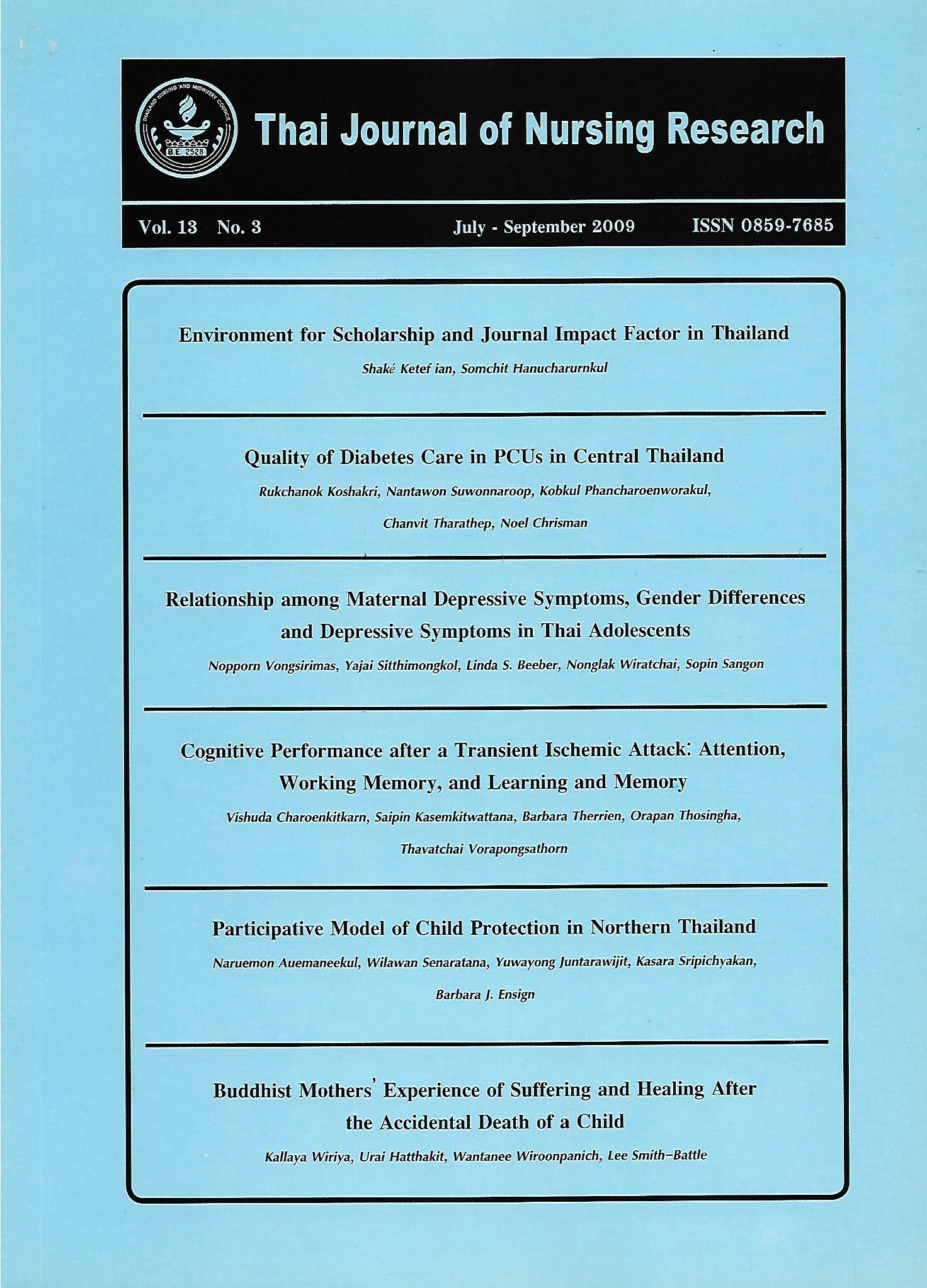Participative Model of Child Protection in Northern Thailand
Keywords:
การคุ้มครองเด็ก, รูปแบบการมีส่วนร่วม, ภาคเหนือประเทศไทย, child protection, participative model, Northern ThailandAbstract
บทคัดย่อ
การศึกษาครั้งนี้ใช้กระบวนการวิจัยแบบมีส่วนร่วมโดยชุมชนเป็นฐาน โดยมีวัตถุประสงค์เพื่อพัฒนารูปแบบเพื่อส่งเสริมการคุ้มครองเด็กในประเทศไทยภาคเหนือ การเก็บรวบรวมข้อมูลใช้วิธีการสัมภาษณ์แบบกึ่งมีโครงสร้าง การสนทนากลุ่ม กิจกรรมการมีส่วนร่วม การสังเกต การประชุมกลุ่มและการระดมสมองกับกลุ่มตัวอย่างในหมู่บ้านชนบทแห่งหนึ่งในจังหวัดเชียงใหม่ โดยกลุ่มตัวอย่าง ประกอบด้วย กลุ่มเด็ก กลุ่มผู้ปกครอง กลุ่มประชาชน และกลุ่มผู้นำชุมชน การวิเคราะห์ข้อมูลเชิงคุณภาพใช้วิธีการวิเคราะห์เนื้อหา รูปแบบการคุ้มครองเด็กแสดงให้เห็นถึงปัจจัยป้องกันเด็ก 3 ระดับ ในระดับบุคคลทั้งเด็กและผู้ปกครองต้องการการส่งเสริมความรู้และทักษะในการคุ้มครองเด็ก เพื่อเพิ่มปัจจัยป้องกันสำหรับเด็กและลดความเสี่ยงในการกระทำสำหรับผู้ใหญ่ ในระดับครอบครัว การคุ้มครอง เน้นที่การส่งเสริมความอบอุ่นในครอบครัว รวมถึงการประยุกต์ใช้แนวคิดเศรษฐกิจพอเพียง สำหรับในระดับชุมชนเน้นการสร้างความตระหนักในปัญหา ส่งเสริมเครือข่ายคุ้มครองเด็ก และพัฒนาแผนแม่บทเพื่อคุ้มครองเด็กในหมู่บ้าน การเคลื่อนไหวของชุมชนในการป้องกันปัญหาการทารุณกรรมเด็ก ก่อให้เกิดความรู้สึกเป็นเจ้าของซึ่งมีผลต่อความยั่งยืน ของโครงการต่อไป
ผลการประเมินแบบมีส่วนร่วมพบการเปลี่ยนแปลงคือ มีเครือข่ายเพิ่มขึ้น ตระหนักถึงความสำคัญของปัญหาในชุมชนที่มากขึ้น มีศักยภาพที่สูงขึ้น มีการกระจายข่าวข้อมูล ข่าวสารด้านการคุ้มครองเด็ก มีข้อตกลงร่วมกันในการบังคับใช้ และดำเนินงานตามแผนคุ้มครองเด็กชุมชน ผลการศึกษาได้ให้แนวคิดในการพัฒนางานวิจัยด้านการพยาบาลการศึกษาและการปฏิบัติงานด้านการคุ้มครองเด็กและส่งเสริมให้มีการจัดกิจกรรมหรือโปรแกรมการคุ้มครองเด็กที่เหมาะสมกับวัฒนธรรมต่อไป
คำสำคัญ: การคุ้มครองเด็ก รูปแบบการมีส่วนร่วม ภาคเหนือประเทศไทย
Abstract
This community-based, participatory research was undertaken with the aim to develop a model for promoting child protection in Northern Thailand. Semi-structured interviews, focus group discussions, participant activities and observations, group meetings and brainstorming were conducted among children, parents, villagers and key community leaders of one rural community in Chiang Mai province, Thailand. Content analysis was utilized for analyzing qualitative data.
The model demonstrated three levels of protective factors for child protection. At the individual level, both children and parents needed to be equipped with the skills and knowledge of child protection. At the family level, the focus was on promoting family warmth and applying sufficient economy. At the community level, the emphasis was on promoting public awareness, encouraging a child protection network, and developing a community child protection master plan. Community mobilization supported the sense of belonging and sustainability of the project.
The participation evaluation indicated change outcomes in terms of more network interest, raising public awareness, improving capacity, disseminating knowledge, and committing and implementing community child protection policy. The study outlines implications for nursing research, education and practice regarding child protection. Culturally appropriate activities and programs also were encouraged.
Key words: child protection, participative model, Northern Thailand
Downloads
How to Cite
Issue
Section
License
Copyright: The Pacific Rim International Journal of Nursing Research, Thailand Nursing & Midwifery Council has exclusive rights to publish, reproduce and distribute the manuscript and all contents therein.







.png)


